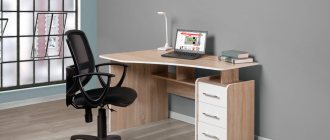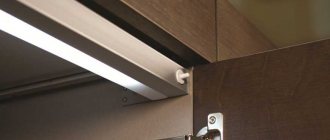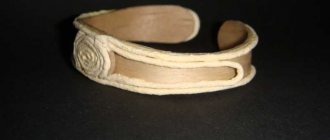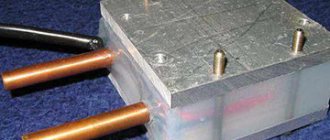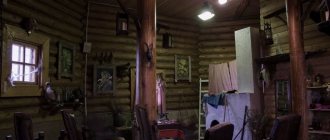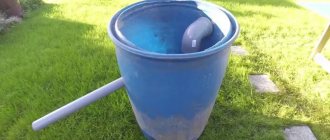A toilet in the form of a mansion is an excellent option for arranging a suburban area, both in the country and in a permanent home.
It has an original appearance, and also has a simple device that can be replicated with your own hands. To make a simple toilet-teremka you will need a minimum of tools and quite common materials in a small volume.
The basis of the design is a simple and reliable wooden frame. The walls and pediments of the mansion in the standard version are sheathed with tongue-and-groove lining. The roof is gable, with a fairly large angle of inclination. The details of assembly and finishing are described in detail below.
After assembly, the toilet in the form of a mansion is installed on a prepared base. It is a pit into which a concrete ring is laid, subsequently covered with a monolithic slab.
Sanitary and hygienic standards for country toilets
Before starting installation work on the independent construction of a toilet in the country, you should carefully study the regulations that govern the construction procedure. There are certain requirements that must be met:
- check that the toilet does not disturb the neighbors. Otherwise, they have the right to complain to the appropriate authority and there is a possibility that the building will need to be moved;
- choose a location, taking into account all the standards and regulations for placement. If this is not done, the result will be a serious deterioration of the ecological situation in the area, contamination of the soil and nearby reservoirs and water sources. The owner of the site will have to pay fines, and health may also be affected due to environmental pollution;
- when designing, you need to take care of the issue of removing waste from the cesspool;
- When selecting a suitable design, it is important to take into account the characteristics of the site, in particular the water horizon. If groundwater is located close to the surface, you need to opt for a completely sealed system.
Attention! Following these requirements will help prevent a variety of operational problems in the future.
Features of drawing construction
A country toilet is not such a simple design as many novice builders tend to think. There are a number of features that are important to consider when developing a project and drawing drawings.
According to sanitary standards, a country toilet should not be located closer than 12 m from a residential building and 8 m from a well or borehole
Toilet installation rules:
- Dimensions. Consider the size of the restroom interior. The minimum allowable area is 1 x 1 m. If you save money and make the booth smaller, it will be inconvenient to use. Also, special attention should be paid to the choice of a country toilet.
- Height. There is also a height limitation. It is not advisable to build a toilet less than 2 m in height. You will soon get tired of entering it bent over.
- Roof slope. When installing a pitched roof, the rear wall is designed slightly lower than the front. This is done to form the slope of the roof and drain rainwater behind the building.
- Lighting. If you do not plan to install electric lighting, ensure that daylight enters your toilet even when the door is closed. If you don't want to bother with windows, cut at least a small hole in the top of the door.
- Ventilation. The country toilet is a poorly ventilated building. To fix this, a ventilation pipe is run along the back wall.
- Shadow. To keep your country toilet from being stuffy in the summer, place it in a shady place.
- Place on site. Another tip for choosing a construction site: avoid the proximity of a septic tank or cesspool to water intake sources, wells, and boreholes. This is done for sanitary and hygienic reasons.
If you take all these recommendations into account, it will be much easier to design a country toilet yourself.
Based on the type of waste disposal, free-standing toilets are divided into storage and portable. Cumulative options involve discharging waste products into a cesspool, septic tank or storage tank.
Toilets with a cesspool are installed at a distance from houses, water supplies and the boundaries of neighboring plots.
Remote dry toilets are plumbing devices with a small storage tank that do not require a sewerage system. The waste is collected and composted in a small container located directly in the plumbing, which needs to be emptied regularly. The pavilion for the dry closet can be located in any convenient place.
It is advisable to connect a building that combines a toilet and a shower stall to one storage tank. In this case, regular pumping of wastewater will be required as the reservoir accumulates.
A sealed storage tank, the wastewater from which is regularly pumped out, can be located 5 m from the dwelling. This method of waste collection does not threaten the environment and groundwater.
It would be wiser to build a toilet in a dacha, visited periodically only in the summer, above a cesspool without pumping. Such pits are filled in as they are filled, and trees are planted on top. The house built above it is simply moved to a new location.
The volume of the cesspool, as well as the volume of the storage tank, is selected in accordance with the number of residents and the intensity of visits.
Ideas for design and decor
You can build a standard, unremarkable cabin - or you can decorate the handles and roof with carvings or paintings. The original shape and decorations will turn an ordinary country toilet into a fairy-tale hut.
- A toilet in the shape of a hut on the site of a country house in the forest;
Simple design and assembles quickly, the main thing is to fasten everything well Source perfectforhome.com
- The Christmas tree toilet does not look so unusual - but it is also very interesting;
A peculiar little house can even become a decoration for the yard Source serhio.amohost.ru
- A toilet with a utility block is a convenient and practical model;
This design will save space on the site and time for the construction of individual structures Source fishki.net
- A restroom with a shower is a great option for those who are not satisfied with simply hosing down.
The restroom can be equipped with a shower stall, where after work on the site you can freshen up. Source yandex.ru
Cabin with sump tank
Very often they create a similar structure at the dacha. The principle of its construction is that a waste pit is built directly under the house.
This is not an entirely comfortable structure, but the simplicity of the design and small financial investments in construction make this model in demand and popular.
When the pit is 2/3 full, it is pumped out. There are some disadvantages of this structure: unpleasant odors in warm weather; soil pollution.
Important! When bottom water is near the surface, the waste pit must be completely sealed to prevent contamination.
Warm restroom
Using a toilet with a single plank wall in the summer is quite comfortable. But not all dachas are visited only in the warm season. For the autumn-spring period, at least some kind of insulation is necessary to block drafts.
In this case, the design of the toilet is no different. Just increase the dimensions by 5-10 cm more: the skin will be double - outside and inside, and insulation is laid between the skin. The doors will also need to be insulated - double doors are too heavy for such a building, but from the inside they can be covered with a piece of linoleum, dermantine and other easily washable material.
About building a toilet with your own hands (with a photo report you can read here).
Where is the best place to place a country toilet?
The optimal place is the corner of a summer cottage. It's good if it's shaded. The toilet must be located at least 1 m from the property boundaries. There are also sanitary and hygienic requirements that must be strictly observed. A toilet with a cesspool should be located 10-12 m from residential buildings, 25 m from a source of drinking water, or even further. Other minimum distances:
- 1.5 m - from berry bushes;
- 4 m - from fruit trees;
- 8 m - from the bathhouse, summer shower.
It is necessary to take into account even those objects that are located in neighboring areas. If the project provides for a sealed septic tank, it is necessary to ensure the possibility of unhindered access for a sewer truck. The wind rose is also taken into account, otherwise the smells wafting from the bathroom can greatly spoil the mood of the owners, their guests and neighbors.
Advantages and disadvantages
As with any building or structure, a tower can have its own advantages and disadvantages.
Pros:
- The structure of the roof allows you to protect the toilet from the effects of certain weather conditions: strong wind and snow. Thanks to this, there is excellent protection from drafts, and snow will not accumulate in winter.
- It is quite spacious, which allows for additional insulation from the inside.
- The toilet has an original appearance. And if you also show your imagination and decorate it with some decorative elements, it will become the main composition decorating your summer cottage.
Minuses:
- Not everyone will find the elongated shape of the tower comfortable.
- More difficult to construct than a rectangular toilet.
Shapes of toilets
It is necessary to select a suitable material in advance, and after this stage, do the project yourself or look for a suitable ready-made drawing.
There is a wide variety of types of wooden models. The most popular form of toilet is the “birdhouse”, but there are others that vary in the complexity of construction:
Hut house
This cabin is compact and economical. Its simple geometric shape impresses with its ease of construction, and its drawing is also elementary. The side walls double as roof slopes; construction of the above-ground part of the toilet takes only a few hours. Roofing material (for example, soft tiles) is laid on the side walls. The façade and rear wall of the structure require finishing.
Toilet-teremok
It has a diamond shape, which makes the job a little more difficult. To give a fabulous look, various carved decorations are used. The frame is lined with round timber sawn in half, ordinary overlapping boards, block house or thick lining.
Toilet combined with shower
In this case, the drawing of such a structure is the addition of a second similar diagram on one side. If necessary, the size of this cabin can be slightly increased.
Birdhouse
But those craftsmen who choose projects of maximum simplicity during construction will certainly like a wooden birdhouse. The easiest way to build it on the site with your own hands is. The pitched roof and primitive design help reduce the consumption of building materials. In addition, the roof of the country toilet makes it possible to easily place a pressure tank - a useful thing if you plan to build a toilet with a toilet.
But the design has many shortcomings. First of all, the building turns out to be shaky. In addition, it is easily blown by the wind. Finally, with heavy rainfall, moisture will likely seep inside, which will also not add comfort.
Subtleties of choosing building materials
Once the decision on the type of toilet structure has been made, you need to select the material that will be used in construction. The choice of building material is important even at the stage of drawing development.
Most often used:
- tree;
- brick;
- metal.
These are familiar materials for summer residents, which almost everyone knows how to handle.
The most common option for constructing a toilet house in a country house involves the use of frame technology.
The frame is constructed from lumber or rolled metal; the walls of the building can be solid or with ventilation gaps in the upper part.
Most often, the frames of country toilets, built from timber, are sheathed with edged boards, clapboard or block house.
The use of corrugated sheeting, which works perfectly in tandem with both a wooden and a metal frame, allows you to quickly finish finishing the frame.
The finishing of a frame building with cellular polycarbonate and plastic slate looks interesting and works excellent.
A log house looks great, but its construction will require greater expenses compared to a frame structure. Such a toilet does not need to be insulated for use in winter. Brick toilets require a massive foundation. They are not erected over cesspools due to their impressive weight.
The construction of a toilet from foam concrete blocks is much faster than using bricks. This type, like the brick one, requires a foundation and involves installing a dry closet or discharging wastewater into a storage tank.
Wood
When it comes to country house construction, the first thing that comes to mind is all kinds of buildings made of wood.
Boards and beams made from inexpensive, but quite strong and durable coniferous wood are easy to obtain, and the work does not require complex equipment. In extreme cases, you can work with wood even without the use of power tools.
Depending on how you design your toilet, you can build completely different restrooms from the same drawing. One of the options is to decorate the walls with a block house or clapboard
If you want to make a toilet not just practical and functional, but also a full-fledged decorative element at your dacha, try building it from a log house. It will take a lot longer, but the result is worth it.
A country toilet is not the most favorable environment. Wood can rot and collapse if it is not treated with special means. Impregnation with an antiseptic is a mandatory condition when constructing a latrine from lumber.
The construction of a toilet house using frame technology includes a number of traditional stages:
- Stage 1: Installation of the frame on foam concrete supports
- Stage 2: Cutting a hole above the cesspool
- Stage 3: Sheathing the frame according to the plank pattern
- Stage 4: Laying the roof covering
From bricks
The advantages of brick buildings over wooden ones are known to everyone from the fairy tale about the three little pigs.
In addition to strength, a brick toilet has low thermal conductivity, which is important if you go to the country in the cold season. A brick country toilet looks like a house with a single or gable roof. Windows can be designed.
It is not necessary to use ordinary brick. More modern block materials such as foam concrete, cinder block, aerated concrete will be an excellent alternative
The design of such a toilet includes not only a drawing of the above-ground part of the toilet, but also the foundation. In this case, it will not be possible to do without a foundation, since the dead weight of the brick building is quite large.
Without support, the soil will soon become compacted and sag, which will cause cracks in the walls of the toilet.
Made of metal
Metal is a material with a high thermal conductivity coefficient. A closet made of metal sheets will be unbearably hot in summer and very cold in winter.
Without the use of thermal insulation materials, an iron toilet in a country house can only be a temporary project - until the construction of the main toilet.
Most often, corrugated sheets are used, sewn onto a metal profile frame. In this embodiment, a profiled sheet of metal is used. Polycarbonate roof on a metal frame
It is difficult to achieve tightness at the joints of such a thin and flexible material. There will be cracks in the corners through which the wind will blow through the house, which also does not add comfort.
If you apply modern technologies and use sandwich panels as wall materials, you can get a completely comfortable restroom. Polystyrene foam or mineral wool is used as insulation.
detailed instructions
When the situation is already clear, you can start working. All leather pads must be trimmed from cotton belts. It will be quite easy to do this if you first disconnect the cheek straps from the bite rings, from the old bridle.
Place them on a table or other surface convenient for you, then mark the required length
It is at this point that it is important to place the position on the straps for the holes. You can focus on the length, about 72 centimeters, this is not counting the buckle
Once the cheek straps are ready, you can proceed to making the chin strap. You will not be able to remove this belt from the factory bridle. Just place your belts against the factory ones and measure the required length, do not forget to leave allowances for the loops.
The component that makes up the chin strap is the buckle at the end of the strap. It is not necessary to use a traditional buckle; you can use a two-ring fastener. If you take the fastener, then there will be no need to punch holes on the other strap.
If you estimate, the length of the strap with the free end is approximately 48 centimeters, and it will still be + 4 centimeters if you sew it overlapping. The length of the strap with a buckle will naturally be less - 31 centimeters.
The subsequent steps are as follows: it is necessary to make a forehead protector and a head strap. Don't guess about the length; always use the old bridle in your measurements. Measure the length of the bridle and browband in a simple way - just place it on the length of the old bridle and mark.
Don't forget to leave at least 4 centimeters on each side. This must be done so that the straps can then be sewn on. The length of these belts should be 48 centimeters, this is with allowances, and without them 36 centimeters.
To avoid fraying of the edges of the belts, carefully trim them.
After that, lay out your blanks on the table, and next to them are the ready-made factory ones. Make sure you acted correctly and did not forget anything.
After checking, the belts can be sewn. Pull the straps through the ring and do not forget to make a lapel. Pins will help secure the loop. The seam should go down the middle. Secure the straps well with zigzag stitches. The lapels that you left must be on the outside.
To secure the straps in the buckle, drill holes. A small drill will help you with this, but only drill at low speed.
There is only one thing left to do - pull the cheek straps through the rings. You can try tightening the bridle by placing it on a chair. The bridle is ready.
Drawings of wooden toilets for a summer residence
In order to make a wooden toilet in the country, at the very beginning you need to create a project drawing. It is necessary in order to calculate as accurately as possible the required amount of building material, clarify the dimensions of the toilet cubicle at the location and determine the sewer drainage scheme (if required).
The plan drawing of the outdoor toilet “Birdhouse” is presented below.
Plan drawing of the outdoor toilet "Izbushka":
Plan drawing of the outdoor toilet "House":
Plan drawing of the outdoor toilet "Shalash":
cesspool
Cesspools are a separate issue. The nuances of their construction and how you can do without them altogether will be discussed below.
Installing a toilet on the street: photo
And this picture shows a diagram of the construction of a utility block and a toilet in the yard. Particularly noteworthy is reflector 1, which is one of the main components of the toilet, because it directs feces to the front part of the drainage pit. Then the entire mass gradually slides into the so-called pumping pocket. During this process, the shed masses are mixed with bacteria. It is thanks to the reflector that the correct biocenosis occurs. If you do not use it, then you will need a hole 2 times deeper and larger in volume. “Grey” waste can drain into a pit without a reflector and also end up in the front part. In order to avoid infiltration into the ground, it is imperative to use a blind concrete box 4 and a clay lock 3. An inspection and cleaning door 2 is also extremely necessary.
Dimensions of a wooden toilet for a summer residence
To determine the exact size of the toilet, you must first select the type of stall and the method of organizing the sewer drain.
For all types of toilet cubicle design, there are different size standards, which is explained by the specific features of their shape. For example, for the toilet design “House” and “Birdhouse”, taking into account the height of the toilet seat from the floor, this is 1.5 m (recess) and approximately 1.2 m (width at the base). For the design of the “Izbushka” and “Shalash” cabins, taking into account the toilet seat pedestal, these standards are 1.5 m (recess) and from 0.9 m (base width).
According to the construction rules in the “Shalash” toilet stall, the distance from the “guest’s” head to the side walls of the room should be at least 40-45 cm (if the person is standing). This fact should be fundamental when designing the angle of the inclined walls and the width of the base of the structure. As an average option, the height of the dome point of the “Shalash” cabin is 2.0-2.2 m (above the pedestal - 1.90 m), and the height of the side of the toilet seat is 0.5 m from the floor level.
How to properly build a wooden toilet in the country with your own hands
The simplest, classic type of wooden toilet for a dacha, made with your own hands, is the Birdhouse toilet cubicle. It is a low building with a sloping pitched roof, a door and a ventilation window. This type of construction is easy to implement and quite economical. In addition, such an outdoor closet can be easily moved to a new location if necessary.
Technical characteristics of the traditional outdoor toilet “Skvorechnik”:
- front wall (height) – 2.3 m;
- rear wall (height) – 2.0 m;
- width of the front and rear walls – from 1.0 m;
- booth base – 1.0 by 1.0 m (standard, but more is possible);
- The roof slope angle is 25-35 degrees.
To build a wooden Birdhouse cabin, you may need the following materials:
- wooden beam;
- edged board;
- wooden lining;
- Chipboard, OSB sheets or plywood;
- board shield;
- slate (classic or plastic);
- roofing felt;
- steel metal profile.
When building a toilet in a country house with your own hands, you need to follow the following rules:
- When creating a drawing of a future stall, it is necessary to take into account the dimensions of the interior space so that using the toilet is convenient and safe.
- The height of the toilet house must be at least 2.0 m. A low doorway is inconvenient, since you will have to bend down before entering each time.
- When building a Birdhouse type cabin, the front part of the roof is higher than the back. This is necessary to ensure that rain or melt water drains behind the building.
- If electric lighting is not planned inside the toilet cabin, then you need to take care of natural lighting of the cabin through a small window in the upper part of the building or in the door.
- To ventilate the toilet, an open window or exhaust pipe should be provided. This is an important point that should not be forgotten.
- To prevent the toilet stall from becoming too stuffy in the summer, it is better to build it in the most shady area.
- When choosing a place for a toilet house in the country, you should avoid proximity to wells, boreholes, natural and artificial reservoirs.
The process of building an outdoor toilet “Birdhouse” with a cesspool:
- First you need to dig a hole with a volume of 2.0-2.5 m³. The pit should extend from the perimeter of the toilet stall (see drawing of the “Birdhouse” above). It is better to make the lower level of the pit with a slight slope towards the cesspool. To seal biological waste, line the bottom and walls of the pit with brick, cinder block, or concrete sarcophagus.
- Use a wooden beam (at least 10.0 cm thick) to assemble a base for the toilet stall. For this purpose, you can use concrete blocks, curbs or cinder blocks - this will increase the life of the toilet superstructure. Cover the part of the pit intended for cesspooling with wooden flooring (shield). Its lid must be treated with bitumen and covered with roofing felt to protect against moisture penetration into the pit.
- The second part of the pit is intended to place a wooden house above it. Assemble the frame of the Birdhouse booth according to the diagram.
- Then it can be sheathed with edged boards, clapboard, wooden panels or any other finishing material. Mount a toilet seat with a hole of the desired shape and size inside the booth.
- Cover the roof of the toilet with any roofing material, install a door in the front part, and cut out a ventilation window. Place the finished wooden cabin on a foundation with a hole and secure it on all sides. Close to the back wall of the toilet house, in the wooden flooring, cut a hole for a plastic ventilation pipe (diameter 10.0 cm). Insert it into this hole and secure it to the toilet wall with clamps. The lower end of the pipe should be buried 20.0 cm into the hole, and the upper end should be at least 70.0 cm from the level of the flooring (put on a protective cap).
After the toilet structure is installed, all wooden surfaces of the stall must be treated with impregnation, covered with stain, varnish or oil paint. This treatment will slow down the aging process of wood and give the building a beautiful aesthetic appearance. Following a special technology, a country wooden toilet can be tiled from the inside.
Using the same principle, you can build and install wooden toilet stalls of a different design on your summer cottage.
Construction stages
A country wooden toilet is a fairly simple construction. After the improvement of the waste storage facility is completed, the main part of the work begins.
- First, the foundation . Posts are driven in around the perimeter. They will serve as a support. The posts can be metal, brick or wood.
- They put together a frame . Ruberoid is applied to the rear part so that water does not “undermine” the base. The frame is located on posts.
- With the help of racks, frames and crossbars, the frame of the future cabin is formed - walls, seat, window for ventilation, ceiling, roof slope, door.
- The frame is installed and secured to the foundation.
- The frame and cladding boards are treated with an antiseptic .
- They knock together the door and attach it to the hinges.
- The floor and seat are covered with wood .
- For hygiene purposes, the circle around the hole and part of the floor are tiled so that the seat is easier to clean and dirt and water do not accumulate on the floor (they also use a regular plastic toilet seat and cover the floor with a rug).
- Cover the roof .
- They conduct electricity and screw in a light bulb.
- A pipe is attached to the back wall for ventilation .
These are the main steps - the rest depends on the type of toilet and the wishes of the owner regarding the decor and design of the cubicle.
The construction of a toilet box begins with assembling the box Source byk.vykola.ru.net
Step-by-step instructions for arranging a toilet with a cesspool
The most ideal option in the country is to build a toilet with a cesspool. Despite the fact that it needs to be dug out, concreted and periodically pumped out, this type of toilet is preferred by almost all summer residents. The above-ground part of the toilet can be built from any material (metal, brick, old pallets). In this article we will focus on the construction of a wooden toilet.
What you need for work
To build an outdoor toilet made of wood, the following materials are needed:
- wood;
- concrete;
- sand;
- crushed stone;
- screws or nails;
- roofing materials;
- antiseptic and impregnation that increases fire safety;
- paints and varnishes;
Tools you will need:
- jigsaw;
- sander;
- hammer;
- building level;
- shovel and drill (for excavation work);
- Bulgarian.
Optimal cabin sizes
For convenient use of an outdoor toilet, it is enough to make a stall of the following dimensions:
- height 2.2 m – 2.4 m;
- width – 1.4 m – 1.8 m;
- depth – 1.2 m-1.4 m.
Drawing of a country toilet with a cesspool
Before starting the work process, you will need to make a sketch of the future building. It is necessary to indicate the exact dimensions of the building itself and the cesspool. Having a detailed drawing will help avoid gross mistakes during construction, which will not only simplify the construction of the toilet, but also save consumables and free time.
Procedure for construction
How to build a toilet quickly, efficiently and inexpensively? To do this, follow the following procedure:
- Prepare the site for construction (clear the area of debris, stones, stumps).
- Make markings for construction.
- Dig a hole and concrete it.
- Build a shallow strip foundation, since the tree is light in weight.
- Make a floor and sheathing for installing a toilet.
- Build a frame and cover it with boards.
- Arrange the roof.
- The final stage is interior and exterior decorative finishing. Since the tree is beautiful in itself, it is better to leave it both outside and inside the building. The only thing is that the wood can be covered with stain and varnish.
As you can see, building a toilet in a country house with your own hands is quite possible. The main thing is to stock up on free time, materials, tools, and prepare a detailed drawing. Having little skills in the construction industry, almost every man is able to build a street toilet from any materials that is strong, reliable and durable.
Wooden toilet without cesspool
Arranging a cesspool with your own hands is the simplest and most effective way to implement a sewer system. However, this cannot be done if the following conditions are met:
- shale or limestone type soil;
- The water level in the ground is more than 3 meters;
- The dacha is visited by a large number of people, therefore, a significant workload is planned.
In such a situation, the only way out would be to build an outdoor country toilet without a drainage pit. There are the following varieties of this type:
- powder-closet;
- backlash-closet;
- dry closet
In most cases, a powder closet is installed when there is a high groundwater level on the site. As a rule, the tank is located under the toilet and has a small volume (up to 18-20 l).
The basic principle of operation: the wastewater is coated with a powdery composition (most often with peat mass), which prevents the appearance and spread of an unpleasant odor. After such treatment, the sewage is transferred to the compost.
The main advantage of this type of outdoor toilet without a cesspool is its simplicity of structure and low construction costs.
- Viewing window.
- Seat cover.
- toilet seat
- Storage capacity.
- Entrance door
- Lining for support joists
- cesspool
- Ventilation window
The backlash closet is characterized by a completely sealed container where sewage and waste water are located. The wastewater in such a toilet does not enter the soil, and therefore is not capable of polluting the environment.
It will be necessary to ensure periodic cleaning by calling in special sewer equipment. The structure of the backlash closet suggests that the main storage tank can be located at some distance from the upper cabin, so such a toilet is often placed in the building.
The disadvantage is the inability to use the building in winter, because... The drains freeze and are difficult to pump out. The solution is to install a special heating system.
Dry toilets are often installed in the countryside. Their operating principle is similar to the work of powders - a closet; waste treatment is also carried out with peat. In some cases, biological preparations containing microorganisms that speed up processing or chemical agents are used.
When using a chemical toilet, it is important to use only safe products.
About ventilation
When building a toilet for a summer house, do not forget about ventilation. The latrine should be equipped with:
- Supply ventilation. It is a small hole at the bottom of the toilet. Only done in stone toilets. Covered with a grill or mosquito net.
- Exhaust ventilation from the top of the pit. If the cesspool is planned to be covered with a concrete floor slab, then at the stage of assembling the formwork for the ventilation pipe, a mortgage is left. Asbestos-cement and sewer pipes are the most commonly used material for ventilation. They are run along the back of the cabin (outside) and secured to the casing with clamps. To improve natural draft, the pipe is placed on the sunny side and painted black. The head is raised 70-80 cm above the roof.
- Exhaust ventilation from the top of the cabin. In order not to make another head, the pipe is connected to the ventilation of the cesspool.
Interesting! A homemade deflector made from an old bucket without a bottom and a cap attached to the bucket with staples will help to increase the draft in the toilet ventilation pipe. The diagram of this original design is shown in the figure below. 1 – cap made of galvanized sheet, 2 – bucket without bottom, 3 – staples (8 pcs.), 4 – clamp, 5 – fasteners, 6 – ventilation pipe.
The first thing an owner does when building a house is build a toilet. Without this structure, even minimal comfort becomes an unattainable dream. We hope that the information and sketches presented will help you make your own country toilet project. If you have your own ideas, or find errors in the text or pictures, then please write to us. We invite theorists and practitioners to the discussion.
Modern tendencies
We must remember that the latrines of today are significantly different from those of several decades ago. What is this connected with? First of all, with the change in the environmental situation, which is not for the better, which is why the requirements for sanitary standards have become stricter.
RECOMMENDED ON THE TOPIC
- How to insulate the floor in a bathhouse with your own hands
- Do-it-yourself corrugated roof
Innovations in the field of waste processing and disposal, which have become more accessible to the general public, also played an important role. Modernity dictates its own rules regarding the design and comfort of toilets, and this is reflected in preferences. The place where people relieve themselves should now be not only ergonomic, but also attractive.
Do you want to make a toilet with your own hands, spending only 7,500 rubles?
Download the country toilet project for free.
Based on all of the above, you can slowly begin building a toilet on your summer cottage. We will touch upon the topic of capital structures made of brick and concrete lightly, but will pay more attention to the external design, which is also of great importance. Like, for example, in this photo:
By the way, the advertised toilet cabins made of corrugated sheets on a metal frame are not very comfortable, because in the summer they are parka in the heat, and in the cool season, on the contrary, they are very cold. They are unlikely to be suitable for installation in a summer cottage. A good option is industrial metal cabins with internal lining and insulation. And it costs less than carpentry.
Of course, the external attractiveness of a latrine is important, because it is much more pleasant to relieve yourself in a beautiful environment. But first of all, you need to take care of the construction process itself and find out what and how to do in order to get a good result. Points that you should definitely consider when building a toilet at your summer cottage:
- Based on external factors, you need to choose a method of waste neutralization, type of drainage and drainage system.
- Choose the exact location where the toilet will be located.
- Think about what the appearance and design of the booth will be. This also includes external and internal design.
- It is imperative to draw up a cost estimate in order to more or less accurately calculate future costs.
Solving these issues will require a certain amount of money, energy and time. Moreover, the easiest and least expensive of all the links is the ground structure (cabin or booth), but the rest will require a lot of work. But let's start, after all, with the booth.
Combined shower-toilet
The second most necessary building at the dacha is a shower. And if so, then why build two separate structures if they can be built under one roof. Several drawings of country toilets with a shower for self-construction are published below.
Some people attach a shower or toilet to their country house. Of course, it’s much more comfortable and you don’t have to walk outside in the cold. But this method also has its own characteristics. Often an extension needs to be legalized. You can read all about this in more detail here.
As you guessed, the structure is simply doubled in width. If you want, you can create your own project, according to your desires and needs. The drawing of a utility room with a toilet will be exactly like this. You may need to make one of the rooms a little larger. Just provide for this when planning and manufacturing supports for construction.
Hut
A hut is a simple architectural form with a gable roof; its emphasized strength and resistance to wind and precipitation distinguish this form of country toilet. Some call it the most economical in terms of material consumption, but this savings occurs only in the case of a small-sized building. Otherwise, there is no talk of any savings.
4 drawings of a country toilet of the "Shalash" type
Warm country toilet for the winter
In winter, running to the toilet in the middle of the night, even if built with love with your own hands, is not a pleasure for everyone. Therefore, many people dream of a warm toilet.
Here we should immediately make a reservation - it will only be warm conditionally. At best, being in a building, you will be protected from snow and wind. It won't be warm here. Unless you are going to connect the toilet to the heating system of the house, install an electric heater in it, or install a potbelly stove, which you will constantly feed with fuel. So, we will try to make do with a minimum of amenities.
The main thing is to insulate the toilet. This can be done in both wooden and brick buildings. Various thermal insulation materials will work, but the easiest way is to use simple polystyrene foam. It has many advantages:
- low cost,
- light weight,
- ease of processing and adjustment,
- high thermal insulation.
The toilet is lined with foam plastic from the inside. To do this, the material is cut into pieces of a suitable shape and size - the easiest way to do this is with a simple hacksaw. If necessary, the edges can be sanded with coarse sandpaper or sandpaper. They must be even so that there are no gaps left when adjusting. The foam is attached to the walls using self-tapping screws and washers - the latter will reduce the pressure on the fragile insulation. By the way, you don’t need to tighten them too much at all - thanks to the lightness of the material, just a couple of screws can easily hold a sheet of several square meters in area. You need to insulate the walls, the door and especially the roof - heat rises and the roof accounts for the lion's share of heat loss.
When the do-it-yourself cladding is completed, for greater attractiveness the toilet is also lined with plywood from the inside. It hides the foam and reduces the risk of accidental damage. The same screws are used as fasteners.
If you want a warm toilet for your dacha, then there are certain ideas for this case too. For example, installing infrared lamps would be a good choice. They consume relatively little energy and at the same time are able to quickly increase the temperature in a small building to more or less comfortable.
Structures, cladding and materials
As a rule, 4 types of lumber are used for the cabin. This:
- edged and unedged boards (“twenty”) or roof slats measuring 50x20;
- for cladding on the outside - edged or tongue-and-groove boards with dimensions from 20 to 30 millimeters;
- for the flooring and toilet seat - tongue and groove boards (40X (120-150));
- frame beam (80x80 or 60x60).
You can replace the sheathing board with OSB (8X20 thick) or waterproof plywood. By the way, you can cut laths from OSB for sheathing. A little more expensive, but in some respects even better, is a tongue-and-groove for sheathing.
The best option for covering the cabin with tongue-and-groove boards is horizontal cladding with belts. In this case, the ridges of the tongues should be directed upwards, and the grooves downwards, which will protect the sheathing from the accumulation of unnecessary moisture in the tongues. The door is sheathed vertically.
Boat planking. Photo:
If the design plan includes curved sections, then it is best to cladding it with boat boards according to the marine type, as shown in the figure. This will be especially good for areas where there is a lot of rainfall, but a little worse for windy areas where tongue and groove piling is best. Using an electric jigsaw with a rotary shoe, you can make a cut edge from a boat board. In this case, it is important to observe the angle of inclination of the visor of the board, which should be within 30 degrees. It should also be taken into account that the canopies of the boards should be directed downward along the slope, as shown in the figure.
It is important to know that after pruning, solid lumber must be treated with special preparations that prevent putrefactive processes - biocides. Afterwards, it is necessary to impregnate it twice with a water-polymer emulsion. This product is affordable and can provide good protection against dampness for many years. You should definitely adhere to a strict impregnation sequence. Otherwise, PVA glue simply will not allow the biocide to cover the wood with a protective film. It is better to treat materials for covering the toilet seat and flooring (from the inside), which face the cesspool or the ground, with bitumen mastic or hot bitumen.

